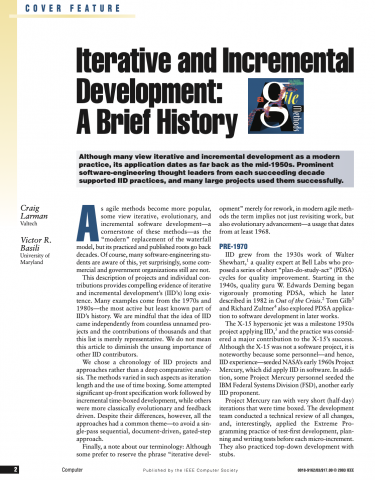As agile methods become more popular, some view iterative, evolutionary, and incremental software development—a cornerstone of these methods—as the “modern” replacement of the waterfall model, but its practiced and published roots go back decades. Of course, many software-engineering stu- dents are aware of this, yet surprisingly, some com- mercial and government organizations still are not.
This description of projects and individual con- tributions provides compelling evidence of iterative and incremental development’s (IID’s) long exis- tence. Many examples come from the 1970s and 1980s—the most active but least known part of IID’s history. We are mindful that the idea of IID came independently from countless unnamed pro- jects and the contributions of thousands and that this list is merely representative. We do not mean this article to diminish the unsung importance of other IID contributors.
We chose a chronology of IID projects and approaches rather than a deep comparative analy- sis. The methods varied in such aspects as iteration length and the use of time boxing. Some attempted significant up-front specification work followed by incremental time-boxed development, while others were more classically evolutionary and feedback driven. Despite their differences, however, all the approaches had a common theme—to avoid a sin- gle-pass sequential, document-driven, gated-step approach.
Defines standard
Replaced/Superseded by document(s)
Cancelled by
Amended by
| File | MIME type | Size (KB) | Language | Download | |
|---|---|---|---|---|---|
| 10.1.1.215.1878.pdf | application/pdf | 264.62 KB | English | DOWNLOAD! |

